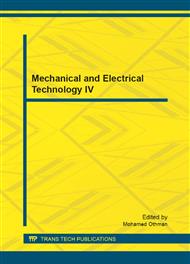p.2415
p.2419
p.2423
p.2427
p.2432
p.2436
p.2440
p.2444
p.2448
Computational Model of Work Roll Temperature Distribution during Hot Strip Rolling Process
Abstract:
Computational models of deformation and friction work were established by dividing contact arc between strip and work roll into two sliding regions, two braking regions and one stagnating region. A two dimensional temperature field model of work roll was established by finite difference method according to practical boundary conditions. Simulation results show that with the increase of rolling pass, deformation work reduced while friction work increased, except that deformation and friction works at the last pass were the least. The computed rolling forces and work roll surface temperatures agree well with measured values collected from a hot strip mill.
Info:
Periodical:
Pages:
2432-2435
Citation:
Online since:
November 2012
Authors:
Price:
Сopyright:
© 2012 Trans Tech Publications Ltd. All Rights Reserved
Share:
Citation:


